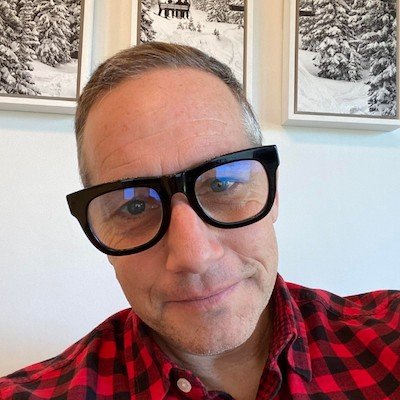Athlete Branding, the Growth of Camps, and Why NIL Isn’t the #1 Factor in Recruiting
Name, Image, Likeness Insider provides insights for brands, agencies, and sports organizations. It covers the latest NIL developments and explains what matters.
THE IMPORTANCE OF AN ATHLETE’S PERSONAL BRAND
In a Student-Athlete Insights Research Poll conducted in the Spring 2022, 68% of student-athletes said they hadn’t received enough support or education on personal branding. Florida’s QB Anthony Richardson recently recognized the importance of his personal brand. As a result of the continued mass shootings in the U.S., Richardson released a statement that he is no longer using the nickname “AR-15.” He had previously launched his own brand of clothing which featured a gun scope in its logo. In an effort to distance himself from the weapon used in these numerous crimes, he’s changing his apparel line’s branding, as well as stopping the use of the nickname (and asking others to call him simply “AR” or “Anthony Richards.”) Richards has multiple NIL brand partnerships, including ones with Gainesville Dodge and Outback Steakhouse. It’s not clear whether Richards felt pressure from those brand partners - or potential brand partners - to drop the use of “AR-15.”
What it means for brands, agencies, and sports properties: Aside from sanitizing their social media profiles (which most did while in high school, while being recruited), only a small percentage of student-athletes have put in the work necessary to develop (or in Richard’s case, re-shape) their personal brands to work with corporate brands. There are at least two things that brands should recognize about this new landscape of sponsorable student-athletes: 1) Most student-athletes lack a basic understanding of branding and 2) Corporate brands will need to take it upon themselves to educate their athlete partners (think brand bootcamp) to ensure success and mitigates risk.
THE CONTINUED GROWTH OF CAMPS/CLINICS/PRIVATE INSTRUCTION
In what’s become a growing trend within NIL activities, last week nearly every player on a college team gathered to coach a group of youth athletes. This time it was 14 members of the Tennessee women's basketball team who served as the coaches for a girls basketball camp. The camp was made possible by a company called Orange Mountain Designs, who initiated name, image and likeness deals with the players. OMD designs and sells Tennessee Lady Vol and Coach Pat Summitt apparel.
Since I began tracking NIL activities in mid-2021, there has been a steady growth in all types of student-athlete led instruction. Per the graph above, camps, clinics, and private instruction accounted for only about 1.5% of all NIL activities in late 2021. Each of those activities now account for over 6% based on a Student-Athlete Insights Research Poll completed earlier this month.
What it means for brands, agencies, and sports properties: First, it’s worth noting that growth of a particular NIL activity can be a result of numerous factors and isn’t always a simple increase in popularity. For example, student-athlete availability in the summer plays a role. But the growth of camps, clinics, and private instruction seems to be a result of student-athlete maturity and understanding of the NIL opportunities they prefer. The language that student-athletes use to describe these activities (garnered from open-ended responses) is telling. They describe the various forms of coaching as, “therapeutic,” “joyful,” “nostalgic,” and “rewarding.” And just as Orange Mountain Designs did with the Tennessee women's basketball team, brands can play a major role in leveraging these activities online, at retail, through various media, and of course during the live events.
NIL isn’T “THE MOST IMPORTANT FACTOR” in recruiting across college sports
I really don’t like writing about college football and NIL. First, because the world doesn’t need another person writing about college football and NIL. Second, because more words on more pages continue to feed a football-dominant narrative which distorts the NIL realities for about 99% of college athletes - including many DI football players. So despite the fact that I am a big Lane Kiffin fan (I mean that), when he tells Ross Dellenger of Sports Illustrated that when it comes to recruiting, “…the No. 1 thing will be (NIL) money,” I think contributes to the public’s misunderstanding of NIL, as well as the growing apathy among non-revenue sport athletes who don’t think NIL applies to them. I’m not saying Kiffin is wrong - he’s obviously an expert on his own recruiting trail. But statements like his are an accurate depiction for only a tiny number of programs and for a small fraction of college student-athletes. (Power Five, football, etc.)
What it means for brands, agencies, and sports properties: While NIL represents a radical change in college sports, it’s really not the most important thing for most student-athletes making their college decision. Less than a year ago, a Student-Athlete Insights Research Poll found that the school’s reputation, offering of specific majors, the social environment, coaching staff, team chemistry, and facilities all continue to far out-rank NIL across all DI sports when it came to choosing a college. Are things different in the SEC? Of course they are, so we need to be reminded of that context. So from a brand perspective, it’s important to remember that most college athletes have remained unchanged by NIL. They are the same consumers you’ve wanted to market to and the same entry-level job seekers you’ve recruited.
I consult with brands, agencies, and sports organizations on Name, Image, and Likeness and teach NIL in College Sports at the University of Vermont’s Grossman School of Business. My NIL services include consulting, training workshops, custom newsletter-style monthly updates, content development, on-demand courses, and more.
I’m a SportsBusiness Journal Forty Under 40 Award winner and former co-founder of the marketing agency Fuse, which I operated for 20 years before selling in 2019.




